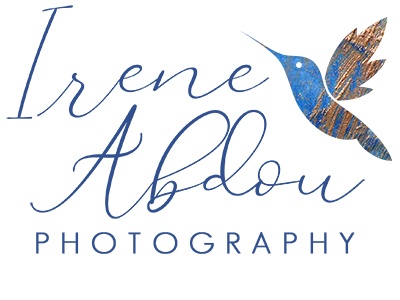In my recent blog post, “Secret #1 of the Exposure Triangle,” I talked about using shutter speed to creatively express movement in your photographs. Today, I’ll take you through Secret #2: Using aperture to control depth-of-field.
Aperture refers to the size of the lens diaphragm opening; it controls the amount of light entering the camera. A big aperture is like a big bedroom window, letting in a flood of light. A small aperture is like a small window – only so much light can enter during any given period of time. On the other hand, shutter speed refers to the time that the camera’s shutter curtains remains open. Imagine drawing curtains across that bedroom window. Leave the curtains open for 1 second, and twice as much light enters the window as if you leave the curtain open for only 1/2 second. Every doubling or halving of the amount of light is referred to as “1 stop” of light. So, if you want a certain amount of light to enter the room, you can either have a big window and close the curtain quickly (big aperture and fast shutter speed), or you could just as easily have a window that’s half the size and leave the curtain open for twice as long (small aperture, slow shutter speed). Get my drift? So, if you get the same amount of light either way (same exposure of your image), how do you decide whether to use a small aperture and slow shutter speed vs. a big aperture and fast shutter speed? Well, shutter speed controls your expression of movement – see my recent post on Secret #1. Today, we’ll talk about Secret #2: using aperture to control depth-of-field.
Depth-of-field refers to how much of the scene is in focus in your photograph. When we look at a scene, our eyes see everything in focus, from far to near. Not so with the camera. You’ve seen landscape photographs where foreground and background are in focus (deep depth-of-field), and you’ve seen portraits where the subject is in focus, but the background is completely blurred (shallow depth-of-field). Well, this is controlled primarily by aperture, but also by a few other factors. Today, I’ll focus just on aperture.
Big aperture = Blurry background
Small aperture = Sharp focus from front to back
In the series of images below, I photographed budding blueberries over at nearby Butler’s Orchard in Germantown, MD. Starting with a small aperture, each sequential image below opens up the aperture by one/two stops, while increasing the shutter speed by one/two stops. As a result, the exposure of each image remains exactly the same. Yet, you can clearly see a difference in each image as regards depth-of-field. In each image, the subject of the photo – the blueberries – are in focus, but comparing the first image below to the last image, the background in the last image is completely blurred out, as compared to the first image!
(Click on “view with PicLens” for a full-screen slideshow.)
[nggallery id=20]
So get creative! Before you take the shot, envision what you want your image to look like, and choose the aperture necessary to create that vision! And that, my friends, is secret #2 of the exposure triangle: using aperture to control depth-of-field.
Want to become a better photographer?






0 Comments